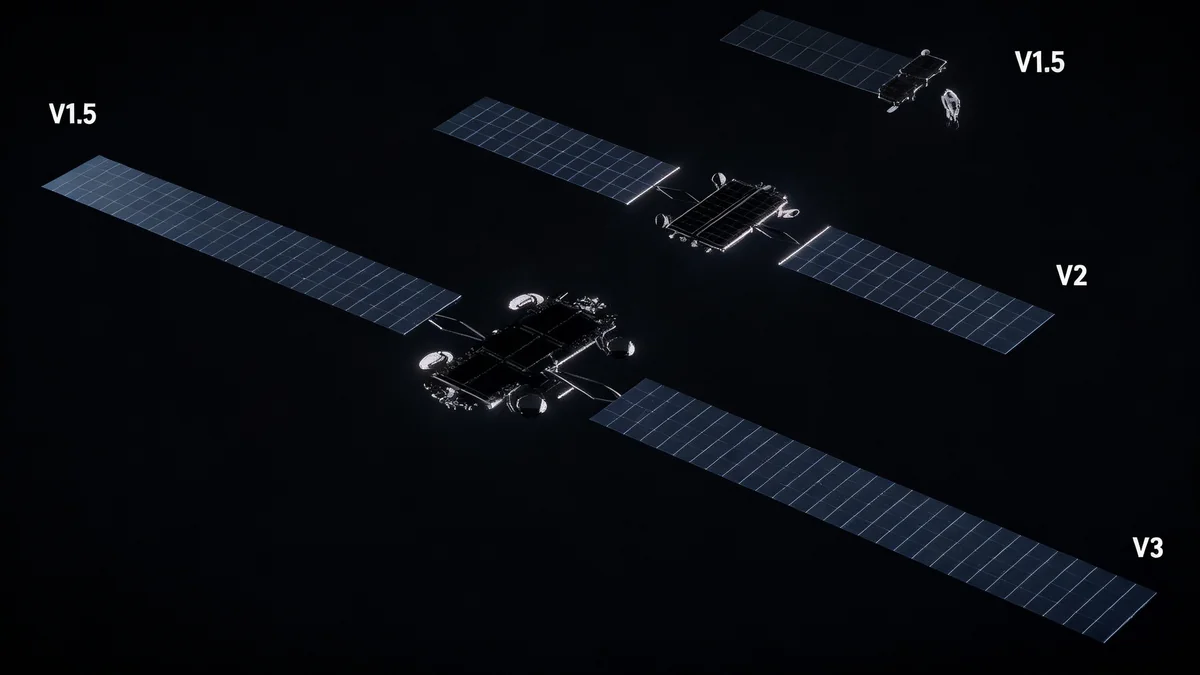A California-based startup named Aetherflux is developing a system to collect solar energy in space and transmit it to Earth using infrared lasers. The company, led by Robinhood co-founder Baiju Bhatt, has secured $60 million in funding and plans to launch its first satellite technology on a SpaceX rocket next year.
Aetherflux's initial focus is on providing a reliable power source for the U.S. Department of Defense in remote locations, with backing from prominent investors including Bill Gates' Breakthrough Energy Ventures.
Key Takeaways
- Aetherflux aims to create a satellite constellation to capture solar power in orbit and beam it to Earth.
- The company will use infrared lasers for wireless power transmission to a network of ground stations.
- It has raised $60 million from investors like Breakthrough Energy Ventures and Andreessen Horowitz.
- The U.S. Department of Defense is the primary initial customer, seeking to power battlefield operations.
- The long-term goal is to reduce costs and make the technology competitive for the broader energy market.
The Aetherflux Approach to Space Solar Power
The concept of collecting solar power in space, where it is constant and unfiltered by the atmosphere, has been a long-standing technological goal. Aetherflux is turning this idea into a practical plan with a modern approach. Instead of a single, large satellite, the company intends to deploy a constellation of smaller satellites in low-Earth orbit.
Each satellite will function as a mobile solar farm, gathering energy from the sun. This energy will then be converted and transmitted wirelessly to the ground. According to CEO Baiju Bhatt, this distributed model offers significant advantages.
“We’re going to do a constellation of satellites where each one transmits power with infrared lasers,” Bhatt explained. “And the benefits of this are, number one, you get to distribute the power generation across a lot of satellites, as opposed to one monolithic one.”
This method avoids the complexity and risk associated with building and launching a single, massive structure. A distributed network of smaller satellites can be scaled more easily and is more resilient to potential failures.
How Laser Transmission Works
Aetherflux has chosen infrared lasers as its method for power transmission. This technology allows for a highly focused beam of energy to be sent from a satellite to a specific point on the ground. The ground infrastructure consists of a network of relatively small receiving stations.
The system is designed for continuous operation. As a satellite orbits the Earth, its path will take it over different ground stations. The technology allows for a seamless handoff from one station to the next.
“You may have one satellite that’s projecting power to one location on the ground, and as it keeps moving around the earth, it’ll find another ground station and start projecting power there,” Bhatt said. This ensures that the energy collected in space is constantly being delivered to where it is needed on the surface.
From Science Fiction to Reality
The idea of beaming energy from space is not new. Science fiction author Isaac Asimov explored a similar concept in his 1941 short story "Reason." In the story, a space station collects solar energy and transmits it to planets via microwave beams. Over 80 years later, companies like Aetherflux are working to make this concept a functional reality.
Strategic Partnerships and Market Entry
To bring its ambitious project to life, Aetherflux is starting with a strategic and well-defined market: military and defense operations. The U.S. Department of Defense has a critical need for reliable power in remote and often dangerous environments.
Currently, military operations frequently rely on convoys of diesel generators, which are logistically challenging to maintain and can become targets for adversaries. Aetherflux's system offers a potential solution by delivering power wirelessly, reducing the need for vulnerable fuel supply lines.
Bhatt stated that the defense sector is an important initial market because it addresses a pressing operational problem. This strategy is also attractive to the company's high-profile investors.
Major Financial Backing
Aetherflux has attracted significant investment from some of the most prominent names in venture capital. Its total funding of $60 million comes from a group that includes:
- Breakthrough Energy Ventures (founded by Bill Gates)
- Index Ventures
- Andreessen Horowitz
- New Enterprise Associates (NEA)
Christian Garcia, a managing partner at Breakthrough Energy Ventures, noted that serving a demanding customer like the military will help the company refine its technology and scale its operations effectively.
“We think that the military customer is large enough — and for lack of a better word, difficult enough — of a customer that if we can serve, we can build a constellation and we can be at scale,” Garcia said.
The investor view is that once the technology is proven and production is scaled up through government contracts, the cost will decrease. “At that point, we will have dropped the cost of the technology such that we can expand into other, into other customers,” Garcia added.
Challenges and the Path to Commercial Viability
Despite the innovative approach and strong backing, Aetherflux faces significant hurdles. The primary challenge, as acknowledged by CEO Baiju Bhatt, is the current high cost of the technology. For space-based solar power to become a mainstream energy source, it must become cost-competitive with established terrestrial options like traditional solar farms, wind power, and fossil fuels.
Bhatt believes that several factors will help drive down costs over time. These include ongoing advancements in rocket launch technology, which have already dramatically reduced the price of sending payloads to orbit. The maturation of key components, such as high-efficiency solar cells and laser systems, will also play a crucial role.
The company's strategy relies on an iterative process. As more satellites are launched, each new version can incorporate improved technology. This continuous cycle of innovation and the economies of scale from a larger constellation are expected to make the system more affordable.
A Growing Field of Competitors
Aetherflux is not alone in the pursuit of space-based solar power. The field is attracting interest from academic institutions, startups, and national governments around the world. Other notable organizations working on similar technologies include:
- Caltech: Researchers at the California Institute of Technology are actively developing and testing their own space solar power technologies.
- Virtus Solis: Another startup focused on delivering clean energy from space.
- Space Solar: A company based in the United. Kingdom with similar ambitions.
Furthermore, international powers are investing in this area. Earlier this year, China announced a comprehensive plan to construct a massive, 1-kilometer-wide solar power station in orbit. China's project intends to use microwaves, another potential method for wireless power transmission, to send continuous energy back to Earth.
This growing competition highlights the global recognition of space-based solar power as a potential long-term solution to the world's energy needs. As Aetherflux prepares for its first launch, it enters a dynamic and increasingly competitive new sector of the space economy.





